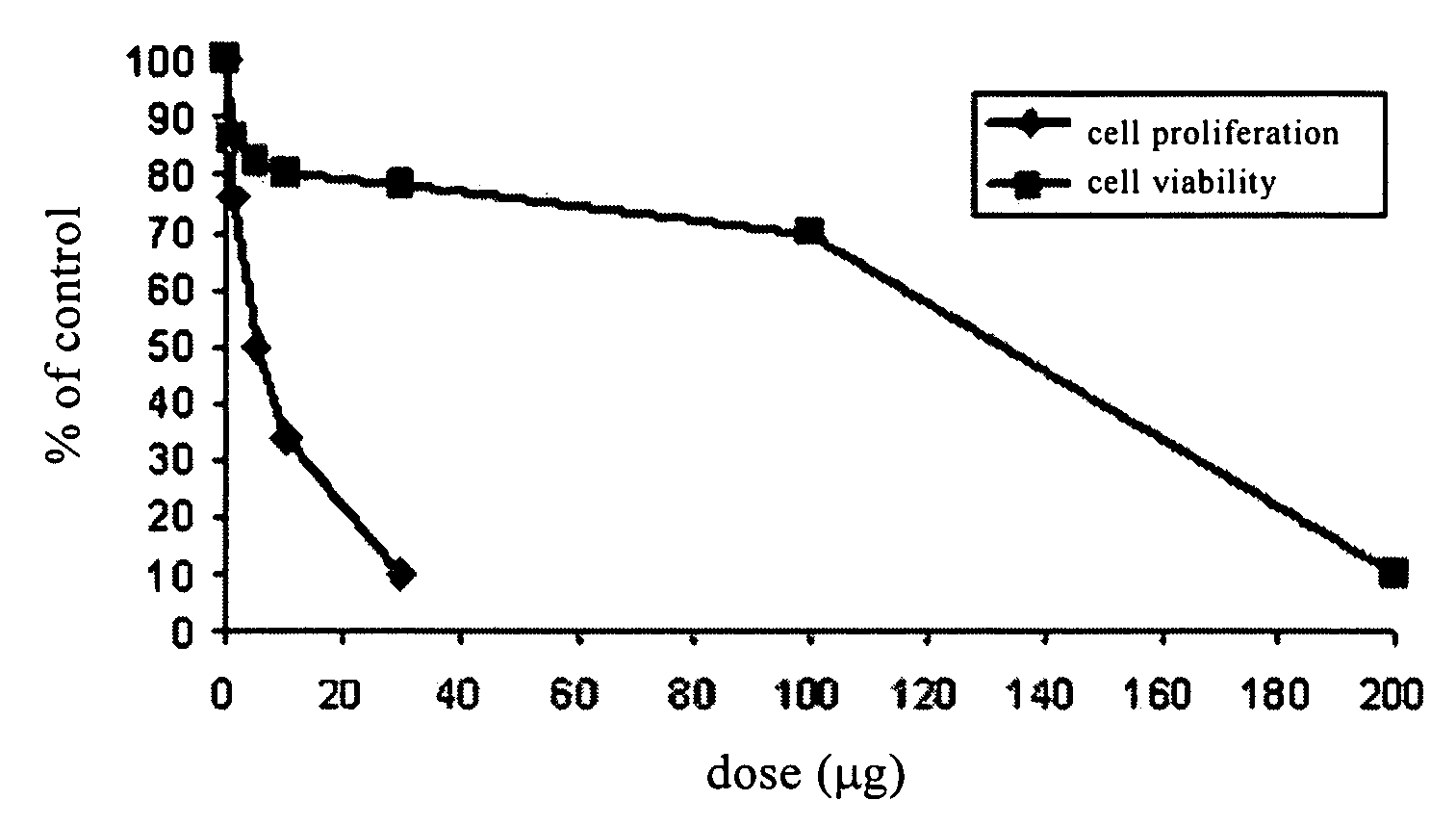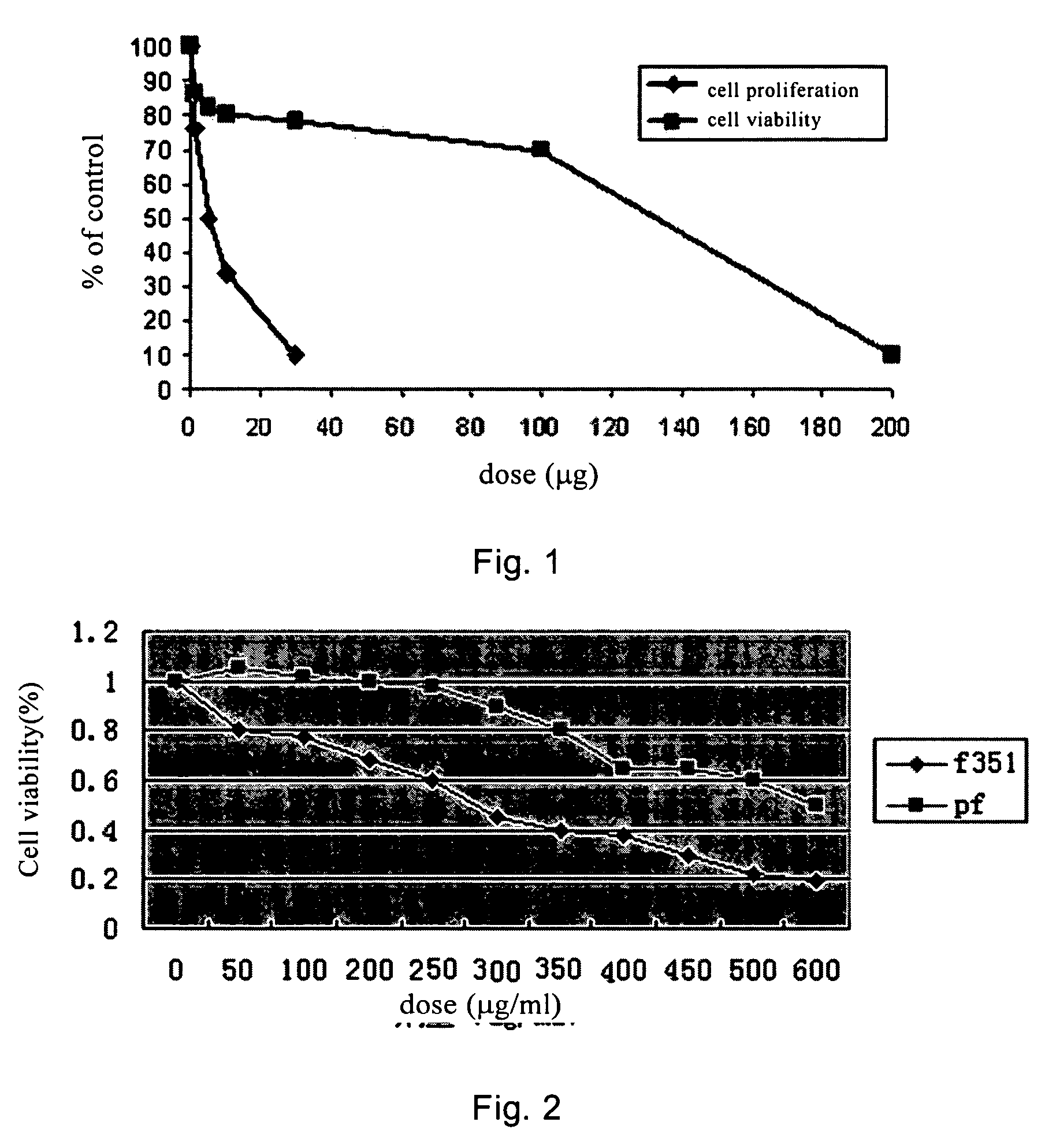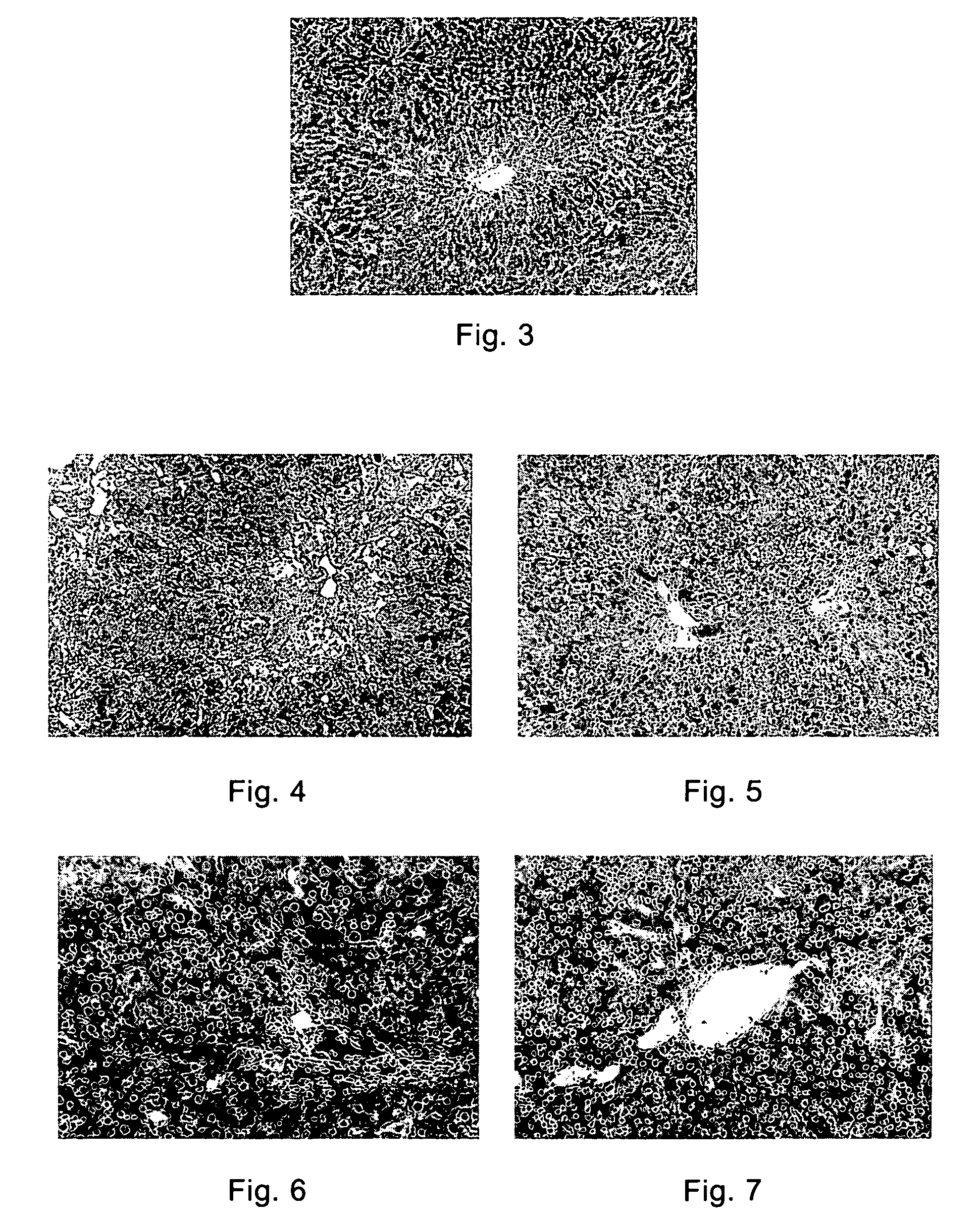Derivatives of pyridone and the use of them
a technology of pyridone and derivatives, applied in the field of pharmaceuticals, can solve the problems of affecting the function of organs, the function of this organ and even the whole body will usually be extremely damaged, and the degeneration and necrosis of hepatocytes
- Summary
- Abstract
- Description
- Claims
- Application Information
AI Technical Summary
Benefits of technology
Problems solved by technology
Method used
Image
Examples
example 1
Synthesis and Characterization of F351
Step 1: Synthesis of 5-methylpyridone
[0063]
[0064]1. 2-amino-methylpyridine (30 g, 0.278 mol) was dissolved in 800 ml 6.3% sulphuric acid.
[0065]2. Sodium nitrite (36 g, 0.522 mol) was dissolved in 100 ml water, then added dropwise into the solution at ambient temperature. This reaction was an exothermic reaction and gave out a large amount of gas.
[0066]3. The solution was stirred for 2 hours after completion of the addition, then refluxed in an increasing temperature for 4 hours. The light yellow solution became black. It was naturally cooled down to the ambient temperature.
[0067]4. In a condition of decreasing the temperature by ice bath, sodium carbonate was added to the solution for neutralization. Then the pH value was adjusted to 8. This reaction was an exothermic reaction and gave out a large amount of gas.
[0068]5. The reaction mixture was concentrated by distillation under reduced pressure at 65° C. The concentrated solution was extracted ...
example 2
F351 Inhibited the Proliferation of Fibroblast Cultured in vitro
[0083]The inhibitory effect of F351 on the proliferation of fibroblast cultured in vitro was tested using the following method. F351 was dissolved in 0.5% DMSO. The fibroblast was treated with F351 of different amount (FIG. 1 and FIG. 2) for 5 days. The agent was refreshed once every 48 hrs. Pirfenidone was used in parallel experiments in order to compare the effects of these two agents.
[0084]MTT assay: 100 ml cell suspension was added into each well of a 96-well plate, 4 parallel wells per group. The concentration of the agent and the culture time remained unchanged. Then 10 μL 5 g / L MTT (3-(4,5-dimethylthiazol-2-yl)-2,5-diphenyltetrazolium bromide) was added to each well for another 4 hrs of culture. 100 uL DMSO was added to each well. Gently vortex to make a uniform mixture. After about 10 mins, OD values at 570 nm and 630 nm were measured by an enzyme linked immune detector (BIO RAD 550). The cell viability rate was...
example 3
F351 Showed Obvious Anti-fibrotic Effect in a Liver Fibrosis Model, and it also Reduced the Hepatocyte Necrosis
[0086]A rat liver fibrosis model was established by induction with CCl4 and DMN (dimethyl nitrosamine)) respectively, and treated with F351 for 4 weeks, 8 weeks. The livers of the animal were harvested to observe the pathologic results. The method was as follows:
[0087](a) Generating a carbon tetrachloride model (injected intraperitoneally with 40% CCl4 mixed with oil, 0.4 ml / 100 g, twice per week, for 4 continuous weeks) and a dimethyl nitrosamine liver fibrosis model (injected intraperitoneally with 1% DMN, 10 mg / Kg, twice per week, for 8 continuous weeks).
[0088](b) The animals of these two models were intragastrically administered with F351 from the 0 day of the model establishment, with the dose at 250 mg / Kg, once per day, for 4 or 8 continuous weeks.
[0089]Results:
[0090](a) DMN Model:
[0091]Compared with the normal rats (FIG. 3), hepatocyte necrosis around the central vei...
PUM
| Property | Measurement | Unit |
|---|---|---|
| temperature | aaaaa | aaaaa |
| temperature | aaaaa | aaaaa |
| temperature | aaaaa | aaaaa |
Abstract
Description
Claims
Application Information
 Login to View More
Login to View More - R&D
- Intellectual Property
- Life Sciences
- Materials
- Tech Scout
- Unparalleled Data Quality
- Higher Quality Content
- 60% Fewer Hallucinations
Browse by: Latest US Patents, China's latest patents, Technical Efficacy Thesaurus, Application Domain, Technology Topic, Popular Technical Reports.
© 2025 PatSnap. All rights reserved.Legal|Privacy policy|Modern Slavery Act Transparency Statement|Sitemap|About US| Contact US: help@patsnap.com



